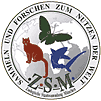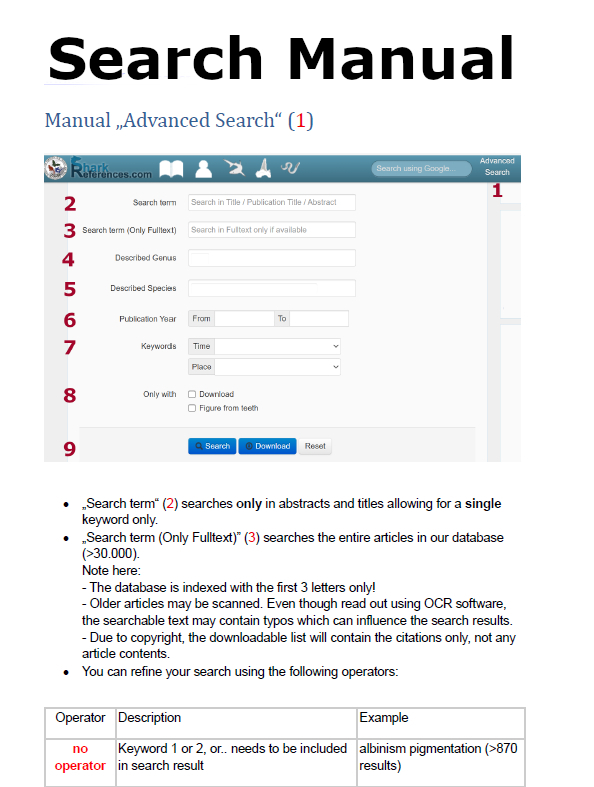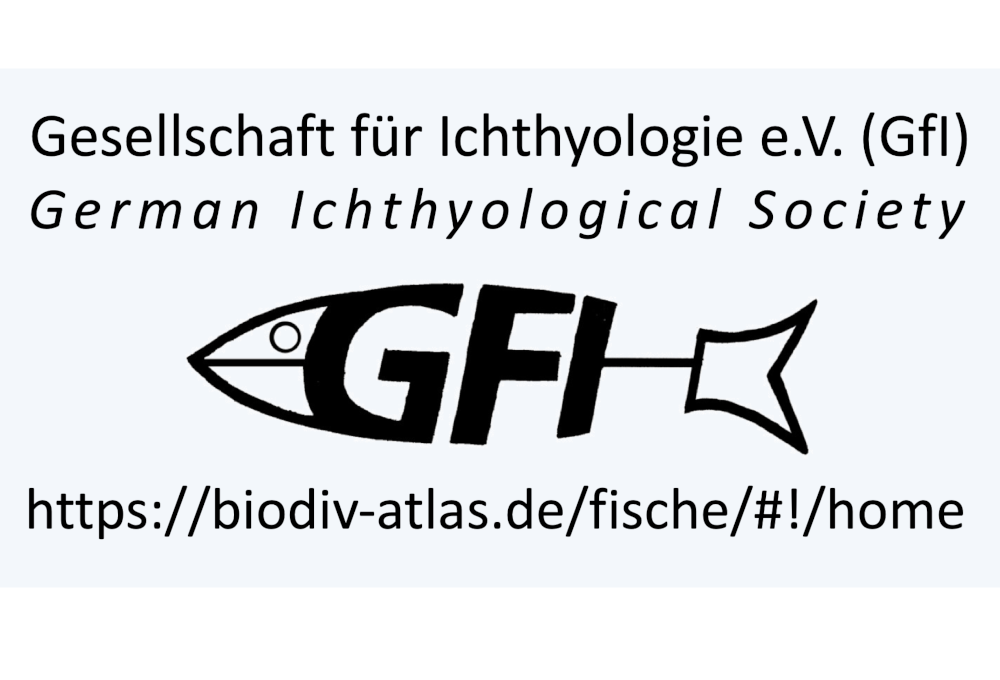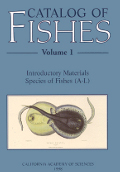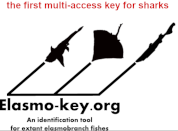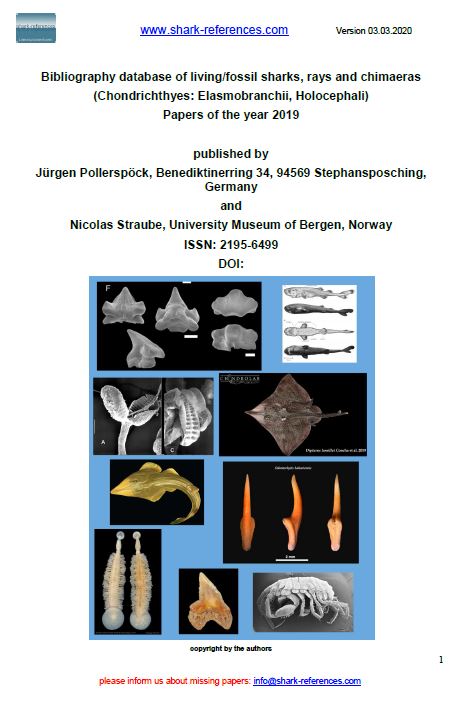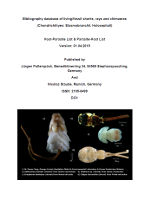Apristurus iterum
White, O'Neill & Jayasinghe, 2025
Classification: Elasmobranchii Carcharhiniformes Pentanchidae
Reference of the original description
Apristurus iterum, a new shark discovered based on egg case morphology and sequence data obtained from a formalin-fixed specimen. Journal of Fish Biology, in press
Apristurus iterum, a new shark discovered based on egg case morphology and sequence data obtained from a formalin-fixed specimen. Journal of Fish Biology, in press
Types
Apristurus iterum
Holotype: QM: I.26441; Paratype: AMS: I.23689-003; CSIRO: H 8057-01; QM: I.41292; QM: I.41248; QM: I.41249;
Apristurus iterum
Holotype: QM: I.26441; Paratype: AMS: I.23689-003; CSIRO: H 8057-01; QM: I.41292; QM: I.41248; QM: I.41249;
Description :
Citation: Apristurus iterum White, O'Neill & Jayasinghe, 2025: In: Database of modern sharks, rays and chimaeras, www.shark-references.com, World Wide Web electronic publication, Version 12/2025
Please send your images of "Apristurus iterum" to info@shark-references.com

Lateral view of preserved Apristurus iterum holotype, QM I.26441, adult female 537 mm total length (TL) © White, O'Neill & Jayasinghe, 2025

Lateral view of preserved Apristurus iterum holotype, QM I.26441, adult female 537 mm total length (TL) © White, O'Neill & Jayasinghe, 2025
Common names
 Copy catshark
Copy catshark
 Copy catshark
Copy catshark
Short Description
Original diagnosis of White, O'Neill & Jayasinghe, 2025 [34731]: A small Apristurus species with the following combination of characters: head moderately long and broad, head length 22.4% TL, interorbital space 7.0% TL; snout moderately long, pre-oral length 9.3% TL, preorbital length 9.5% TL; mouth very wide, its width 10.7% TL; pelvic–anal space 3.4% TL; anal fin large, base length 17.7% TL, posterior margin 12.5% TL; prepectoral length relatively long, 21.9% TL; labial furrows long, not confined to mouth corners, uppers longer than lowers (3.9 vs. 2.3% TL); no enlarged denticles on upper or lower caudal fin; 35 monospondylous centra; 35 precaudal-diplospondylous vertebrae; precaudal centra 70; females mature by 537 mm TL; egg case small (49.4–67.6 mm long), with 10–14 weakly T-shaped ridges on dorsal and ventral surfaces.
Original diagnosis of White, O'Neill & Jayasinghe, 2025 [34731]: A small Apristurus species with the following combination of characters: head moderately long and broad, head length 22.4% TL, interorbital space 7.0% TL; snout moderately long, pre-oral length 9.3% TL, preorbital length 9.5% TL; mouth very wide, its width 10.7% TL; pelvic–anal space 3.4% TL; anal fin large, base length 17.7% TL, posterior margin 12.5% TL; prepectoral length relatively long, 21.9% TL; labial furrows long, not confined to mouth corners, uppers longer than lowers (3.9 vs. 2.3% TL); no enlarged denticles on upper or lower caudal fin; 35 monospondylous centra; 35 precaudal-diplospondylous vertebrae; precaudal centra 70; females mature by 537 mm TL; egg case small (49.4–67.6 mm long), with 10–14 weakly T-shaped ridges on dorsal and ventral surfaces.
Size / Weight / Age
Only known from the postnatal holotype, a gravid female of 537 mm TL and 10 egg cases [34731]
Only known from the postnatal holotype, a gravid female of 537 mm TL and 10 egg cases [34731]
Dentition
Tooth files on upper jaw 40 + 40 = 80, on lower jaw 38 + 40 = 78. Teeth on upper jaw possessing mostly 5 cusps (2–1–2 arrangement), rarely 3 or 4 cusps (2–1–2 or 2–1–1 arrangement) (Figure 4a); third tooth from the symphysis with moderately long central cusp, about 1.5 to 2 times the length of adjacent cusps, outermost cusps much smaller than cusps on either side of central cusp; central cusp mostly upright anteriorly, becoming more oblique and curved in posterior teeth. Teeth on lower jaw with mostly 5, rarely 4, cusps (Figure 4b); third tooth from symphysis with long central cusp, about 1.5 to 2 times the length of adjacent cusps, outermost cusps of anterior teeth much smaller than cusps on either side of central cusp, becoming less so posteriorly (posteriormost teeth almost maple leaflike in outline with central cusp barely larger than lateral cusps). No naked space at symphysis of upper jaw; distinct naked space at symphysis of lower jaw. [34731]
Tooth files on upper jaw 40 + 40 = 80, on lower jaw 38 + 40 = 78. Teeth on upper jaw possessing mostly 5 cusps (2–1–2 arrangement), rarely 3 or 4 cusps (2–1–2 or 2–1–1 arrangement) (Figure 4a); third tooth from the symphysis with moderately long central cusp, about 1.5 to 2 times the length of adjacent cusps, outermost cusps much smaller than cusps on either side of central cusp; central cusp mostly upright anteriorly, becoming more oblique and curved in posterior teeth. Teeth on lower jaw with mostly 5, rarely 4, cusps (Figure 4b); third tooth from symphysis with long central cusp, about 1.5 to 2 times the length of adjacent cusps, outermost cusps of anterior teeth much smaller than cusps on either side of central cusp, becoming less so posteriorly (posteriormost teeth almost maple leaflike in outline with central cusp barely larger than lateral cusps). No naked space at symphysis of upper jaw; distinct naked space at symphysis of lower jaw. [34731]
Remarks
shark-references Species-ID=17662;
shark-references Species-ID=17662;
